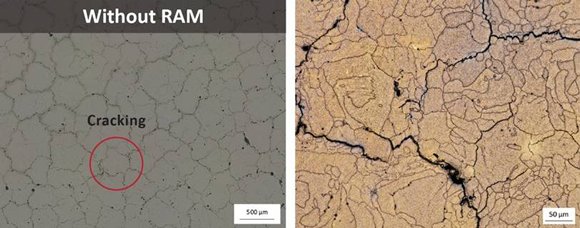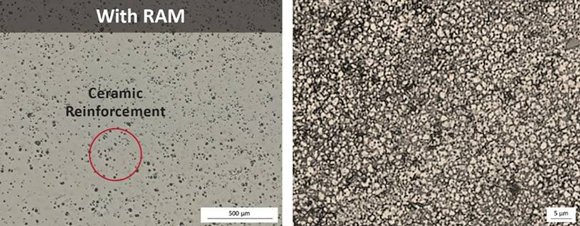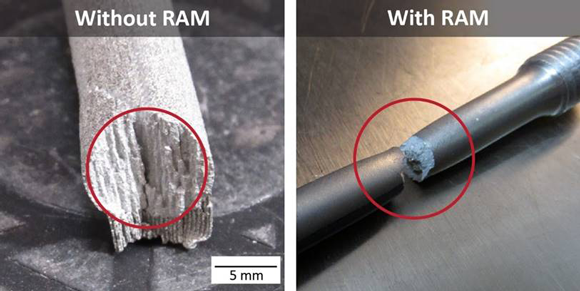Elementum 3D granted patents for its Reactive Additive Manufacturing
June 8, 2020

Elementum 3D, Erie, Colorado, USA, has been awarded patents in the USA, Canada, and Australia for its Reactive Additive Manufacturing (RAM) technology. The company states that its RAM process significantly expands the potential AM materials library by enabling the Additive Manufacturing of previously unviable materials.
Through RAM, Elementum 3D explains that it has introduced a family of new Laser Beam Powder Bed Fusion (LB-PBF) AM materials with superior properties compared to previously available AM materials and corresponding wrought alloys. This success in AM with new materials and previously unsuitable traditional manufacturing materials is expected to enable the introduction of new AM applications.
The company’s RAM technology is used to create additively manufacturable, high-performance alloy powders based on established wrought alloys, including aluminium 1000, 2024, 6061, 7050 and 7075. These popular high-strength wrought aluminium alloys could not previously be additively manufactured because they are prone to hot tearing (solidification cracking), resulting in parts with poor mechanical properties.
The RAM process forms sub-micron inoculants in the melt pool that nucleate aluminium grains to produce a fine equiaxed microstructure for good buildability and performance. By making AM versions of these alloys widely available, Elementum 3D states that it eliminates material compromises.
An unmodified ‘standard’ 6061 aluminium alloy is shown in Fig. 1 after Additive Manufacturing and polishing. The left-hand micrograph shows a low-magnification image of the polished and unetched growth plane with the large grain structure and the network of intergranular cracking clearly visible. The right-hand image shows a higher magnification micrograph of the same material etched with weck’s reagent showing the cracking network.

Elementum 3D’s A6061-RAM2 additively manufactured material is shown in Fig. 2, with the left-hand image showing a crack-free microstructure with a dispersion of nucleating and reinforcing particulates. The right-hand image shows a higher magnification view of the same material etched by weck’s reagent revealing the fine equiaxed aluminium grain structure that gives the A6061-RAM2 material its properties.

“Our revolutionary technology advances metals development for additive manufacturing at an unprecedented pace,” stated Dr Jacob Nuechterlein, President and founder of Elementum 3D. “It gives engineers the extra degree of freedom they have never experienced, inspiring them to bring into existence new and innovative applications.”
















